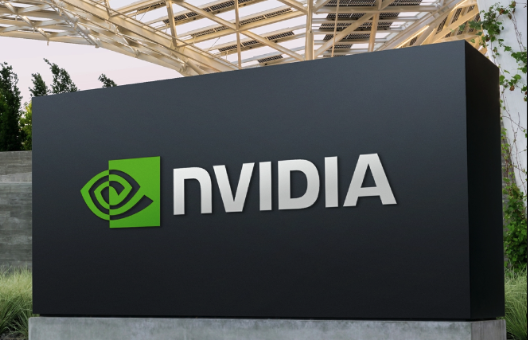2024 SD-WAN/SASE Managed Services Survey Report

Futuriom has been tracking the evolution of software-defined wide-area networking (SD-WAN) and secure access service edge (SASE) for the past 20 years, as these technology areas have grown to help networking and cybersecurity professionals with many new challenges, including the growing complexity created by distributed applications, cloud connectivity, and sprawling security risks.
To highlight the convergence of SD-WAN and SASE technology, we have for several years surveyed networking and security professionals to tap their understanding of how secure networks are evolving to meet their needs. This year, we are once again publishing the results of this annual survey.
The importance of building and managing secure, reliable networks has grown more important than ever. Whether it’s digital transformations, cloud transformations, AI transformations, network transformations, or data transformations—the network powers everything. With any type of distributed applications, a network must connect and transmit data. In managing these transformations, users are grappling with many issues: Security, data governance, cloud costs, and application flexibility, for example, are just some of the topics that are top of mind.
AI has only served to accelerate this trend. AI turbocharges the need for secure access to data, clouds, and private datacenters. The networks that connect this infrastructure must be robust, flexible, and secure. And AI is going to continue to be at the heart of every major IT transformation.
What’s needed are integrated security and network platforms that can be fully managed and automated with software, or provided as-a-service. This model has evolved from the building blocks of SD-WAN, which separated the software control from the hardware for branch-office networking, and it has now evolved into SASE, which provides a completely integrated networking and security solution. It only makes sense that SD-WAN and SASE converge, as all data crossing the network must be observed, analyzed, and secured.
What's In This Report?
Service providers and SASE vendors can work together to qualify, integrate, and deploy both SD-WAN and SASE managed services. These markets have been successful because they help enterprise network and security managers implement a wide array of networking and security services at once. In this report, we update you on the evolution of SD-WAN/SASE managed services, anchored to a detailed annual survey of enterprise users of SD-WAN and SASE technology.
To help clarify trends and needs from the end-user community, we conducted a survey of enterprise IT and networking practitioners. Our survey took place in March and April of 2024. The total audience of 192 respondents came from the U.S., Germany, and the U.K., with a total of 128 from the U.S. and a combined 64 from Germany and the U.K.
We qualified the audience by asking filter questions to ensure respondents were director-level and above employees managing network and cybersecurity services at companies with more than 200 employees. In addition, we qualified respondents for networking and cybersecurity budget authority. Some of the sample titles of respondents included CEO, CIO, CTO, Software Engineer, Director of IT, Network Lead, IT Manager, Network Operations Manager, and VP of Infrastructure, to name a few.
Special thanks to our sponsor, Aryaka Networks.
Key Trends and Highlights
Our 2024 survey results clearly demonstrate interest in SD-WAN/SASE managed services, with 83% of users surveyed saying they will be increasing investment and dependence on cloud services, including networking and security services compared with last year.
In another broad question, we asked users for their “most critical” area of networking budget focus. These responses included automating network monitoring and visibility (38%), improving network performance (24%), and improving network security (24%). In a pattern that has established itself in past surveys, an outright focus on lowering cost is lower down the list.
Some of the key findings of the report:
- Survey respondents indicate that demand for SD-WAN and SASE managed services continues apace. SD-WAN and SASE managed services are considered essential parts of cloud connectivity buildouts, ensuring embedded security and communications across clouds and enterprise networks.
- The biggest challenges in managing wide-area networks (WANs) include complexity of networking domains, complexity of technologies, and cost. When respondents were asked about their largest challenges, they identified complexity of connecting different network domains (42%), cost (25%), and complexity of managing different network technologies (20%).
- The integration of SASE and SD-WAN technologies is viewed favorably by enterprise networking experts. In the survey, 70% of respondents said they see the benefit of combining SD-WAN and SASE.
- Automating network visibility, improving network performance, and network security are the top budget focus areas of our survey group. The top areas identified were automating network visibility and monitoring (38%), improving network performance (24%), and improving network security (24%).
- NaaS, SASE, and managed services are seeing strong demand. Of those surveyed, 64% of respondents said network-as-a-service (NaaS) will play a greater role in managing network and cloud connectivity in 2024, and 67% said managed services and SASE will play a greater role in how they manage their network and security services in 2024.
Companies covered in this report: Aryaka, Amazon, AT&T, British Telecom, Cato Networks, Check Point Software, Cisco, Cloudflare, Colt, Comcast, Deutsche Telekom/T-Systems, Forcepoint, Fortinet, HPE (Aruba), Hughes, Juniper Networks, Lumen Technology, NTT, Orange, Palo Alto Networks, Tata Communications, Telefónica, Telstra, VMware, Verizon, Versa Networks, Vodafone, Windstream, Zscaler
Total Length: 29 pages















